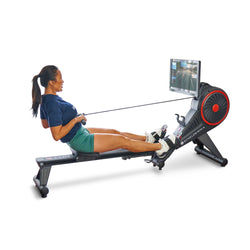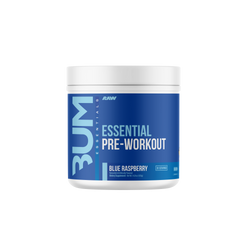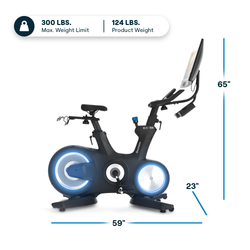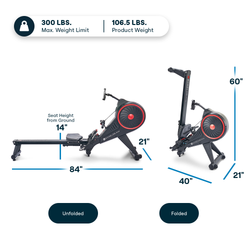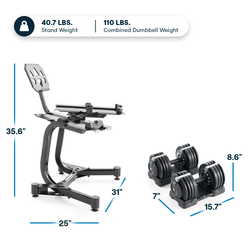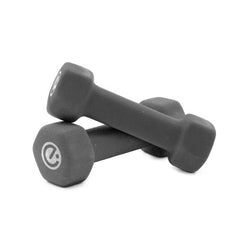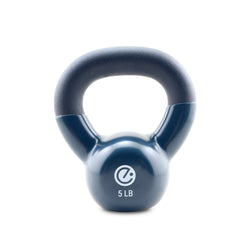Building Strength: Why Strength Training is Essential

Strength training is an often overlooked but essential part of physical fitness. It can help improve overall health and physical performance, reduce the risk of injury, and enhance quality of life. In this blog post, we will explore why strength training is so important, what benefits it can offer, and how to get started with a safe and effective strength training program. Whether you’re a beginner or an experienced athlete, strength training can be an integral part of your fitness routine.
What is strength training?
Strength training, also known as resistance training, is a form of exercise that uses resistance, such as weights, resistance bands, or bodyweight, to strengthen and tone muscles. The goal of strength training is to increase muscle strength, endurance, and mass. It involves performing a variety of exercises that target different muscle groups and can be performed with free weights, weight machines, or using your own body weight.
Strength training can benefit people of all ages and fitness levels. Whether you're a beginner or a seasoned athlete, strength training can help you achieve your goals, such as increasing overall strength, improving sports performance, reducing body fat, and preventing chronic diseases. Regular strength training has also been shown to improve bone density, balance, and overall quality of life.
It's important to note that strength training doesn't necessarily mean bodybuilding or bulking up. Many people think that strength training is only for those looking to get bigger and stronger, but this is a common misconception. Strength training can benefit anyone, regardless of their fitness goals, and can be tailored to suit individual needs and preferences.
The benefits of strength training
Strength training is not just for bodybuilders or athletes. It is a crucial component of overall health and fitness for individuals of all ages and fitness levels. Incorporating strength training into your routine has numerous benefits that extend beyond simply looking more toned and fit.
One of the most important benefits of strength training is the improvement in muscle mass and bone density. As we age, our muscles naturally begin to deteriorate, leading to decreased strength and mobility. Strength training helps to counteract this natural decline by building and maintaining muscle mass. Additionally, strength training can increase bone density, reducing the risk of osteoporosis and fractures.
Beyond physical appearance, strength training also plays a vital role in reducing the risk of chronic diseases. Regular strength training has been shown to lower the risk of developing conditions such as heart disease, type 2 diabetes, and certain types of cancer. It also helps to control blood sugar levels, lower blood pressure, and improve cholesterol levels.
Strength training is not only beneficial for general health but also for enhancing sports performance. Whether you are an avid runner, a weekend warrior, or participate in any other athletic activity, incorporating strength training can help improve your performance and reduce the risk of injuries. It helps to strengthen the muscles and joints involved in specific movements, leading to better overall performance and endurance.
In addition to these benefits, strength training can also boost metabolism and aid in weight loss. The more lean muscle mass you have, the higher your resting metabolic rate, which means you burn more calories even when at rest. This can be especially helpful for those looking to lose weight or maintain a healthy weight.
To incorporate strength training into your routine, start with simple exercises that target major muscle groups, such as squats, lunges, push-ups, and planks. Gradually increase the weight or resistance as you become stronger and more comfortable with the exercises. It is recommended to aim for at least two days of strength training per week, allowing for rest days in between to allow for muscle recovery.
Despite the many benefits of strength training, there are often obstacles and misconceptions that can deter individuals from incorporating it into their routine. Some common misconceptions include the fear of becoming too bulky, the belief that only cardio exercises are necessary for weight loss, or the misconception that strength training is only for young and fit individuals. It is important to educate yourself and consult with a fitness professional to overcome these misconceptions and design a strength training program that suits your individual needs and goals.
Improving muscle mass and bone density
Strength training is a powerful tool for improving muscle mass and bone density. As we age, our muscles naturally begin to weaken, and our bones lose density, making us more susceptible to injuries like fractures. By incorporating strength training into your routine, you can work to reverse this process and maintain strong, healthy muscles and bones.
Strength training has been shown to increase muscle mass, which is crucial for maintaining mobility and balance as we age. Building muscle can help prevent falls and fractures, as well as improve overall quality of life. In addition, strength training has been shown to increase bone density, reducing the risk of osteoporosis and other bone-related conditions.
Even if you are not concerned about the effects of aging on your muscles and bones, strength training can also help improve overall fitness and athletic performance. Strong muscles are key for athletes of all levels, allowing for improved speed, power, and endurance.
Overall, strength training is essential for maintaining and improving muscle mass and bone density, as well as enhancing athletic performance. By incorporating strength training into your routine, you can enjoy these benefits for years to come.
Reducing risk of chronic diseases
Strength training is not just about building muscles and toning your body. It is also an excellent way to reduce the risk of chronic diseases, such as diabetes, cardiovascular diseases, and osteoporosis. Studies have shown that strength training can help manage blood pressure, lower cholesterol levels, and improve insulin sensitivity, all of which are essential factors in preventing chronic diseases.
Strength training also promotes healthy aging by maintaining bone density, preventing osteoporosis and reducing the risk of falls in older adults. In addition, strength training helps to improve posture, balance, and coordination, which can prevent falls and fractures.
For individuals with chronic diseases, such as arthritis or osteoporosis, strength training can be an effective way to manage symptoms and prevent further deterioration. Strength training exercises help to strengthen muscles, support joints and improve flexibility and range of motion.
In summary, strength training is an excellent way to improve overall health and well-being. By incorporating strength training into your routine, you can reduce the risk of chronic diseases, promote healthy aging, and improve the quality of life. It is important to consult with a certified personal trainer or healthcare professional to ensure proper form and safety while performing strength training exercises.
Enhancing sports performance
Whether you're an athlete or just a weekend warrior, incorporating strength training into your workout routine can significantly enhance your sports performance. By building up your muscles and increasing your strength, you'll be able to move faster, jump higher, and throw farther, giving you a competitive edge on the field or court.
Additionally, strength training can also improve your endurance and help prevent injuries. When your muscles are stronger, they're better able to withstand the repetitive motions and stresses that come with many sports. And if you do happen to get injured, you'll have a faster recovery time if your muscles are already strong and healthy.
If you're an athlete, it's important to tailor your strength training to your specific sport and position. For example, a basketball player might focus on building up their leg and core muscles for jumping and agility, while a soccer player might focus on their lower body strength for running and kicking.
No matter what sport you play, adding strength training to your routine can take your performance to the next level. And even if you're not an athlete, strength training can still benefit your overall fitness and health. So grab some weights and start building your strength today!
Boosting metabolism and weight loss
One of the most exciting benefits of strength training is its ability to boost metabolism and aid in weight loss. While many people associate cardio exercises with weight loss, strength training is equally as important, if not more so, in achieving your weight loss goals.
When you engage in strength training, your body burns calories not only during the exercise itself but also in the hours that follow. This is because strength training increases your lean muscle mass, and muscle requires more energy to maintain than fat. By building muscle through strength training, you are effectively increasing your metabolism, which means you burn more calories even when at rest.
Additionally, strength training can help you burn more fat. As you gain muscle and increase your metabolism, your body becomes more efficient at burning fat for fuel. This can lead to increased fat loss and a more toned and sculpted physique.
To maximize the weight loss benefits of strength training, it is important to combine it with a healthy diet and regular cardiovascular exercise. Aim to include strength training exercises at least two to three times a week, focusing on compound exercises that target multiple muscle groups. These include exercises such as squats, deadlifts, push-ups, and lunges.
How to incorporate strength training into your routine
Incorporating strength training into your routine can be done in a variety of ways, and it doesn't have to be complicated. One way to start is by setting aside a specific time for strength training, such as dedicating 30 minutes, three times a week. This allows for consistency and helps make it a habit. It's also important to choose exercises that target all major muscle groups, including the legs, arms, back, and core.
When starting out, it's a good idea to begin with lighter weights or resistance bands and gradually increase as you build strength. It's also important to focus on proper form and technique to prevent injury. Some people prefer to do full-body workouts, while others prefer to focus on specific muscle groups on different days. Find what works best for you and your schedule.
Additionally, incorporating strength training into other activities can be a great way to add variety and increase the challenge. For example, incorporating bodyweight exercises during a run or adding weights to a yoga routine can provide a well-rounded workout.
Remember, strength training doesn't have to be done at the gym. There are plenty of exercises that can be done at home or even outside, such as push-ups, squats, lunges, and planks. With consistency and dedication, incorporating strength training into your routine can lead to a stronger and healthier you.
Different types of strength training exercises
There are many different types of strength training exercises that can be incorporated into your workout routine. Here are a few examples:
1. Free weights: This includes exercises such as dumbbell curls, bench press, and squats. Free weights are versatile and can be used to target specific muscle groups or engage multiple muscle groups at once.
2. Resistance bands: These elastic bands provide resistance as you push or pull against them. They are a great option for those who may not have access to traditional weight equipment or prefer a portable workout.
3. Bodyweight exercises: These exercises use your own body weight as resistance. Examples include push-ups, squats, lunges, and planks. Bodyweight exercises can be done anywhere and are excellent for building strength without the need for additional equipment.
4. Machines: Gyms often have a variety of strength training machines that target specific muscle groups. These machines can provide stability and support, making them ideal for beginners or individuals with limited mobility.
5. Functional training: This type of strength training focuses on movements that mimic real-life activities. Examples include kettlebell swings, medicine ball slams, and farmer's walks. Functional training helps improve overall strength and enhances your ability to perform everyday tasks.
Remember, it's important to mix up your strength training exercises to keep your workouts challenging and prevent plateaus. Consider consulting with a fitness professional to create a customized workout plan that suits your goals and abilities.
Overcoming common obstacles and misconceptions about strength training
Despite the numerous benefits of strength training, there are still some common obstacles and misconceptions that people may face when considering incorporating it into their routine.
One common misconception is that strength training is only for bodybuilders or athletes. However, strength training can benefit anyone, regardless of age, gender, or fitness level. It can improve overall health, quality of life, and reduce the risk of chronic diseases.
Another obstacle may be the fear of injury. While any exercise carries a risk of injury, strength training, when done correctly and under the supervision of a trained professional, is safe. Starting with lighter weights and gradually increasing can help prevent injuries.
Some people may also worry about bulking up or becoming too muscular. However, unless they are actively working towards that goal and following a specific diet and training plan, it is unlikely that strength training will cause them to bulk up. In fact, it can help improve muscle tone and definition.
Lastly, time constraints or a lack of equipment may be seen as a barrier. However, strength training can be done with minimal equipment and in as little as 20-30 minutes a few times a week. Bodyweight exercises such as push-ups, squats, and lunges are effective options that require no equipment.


